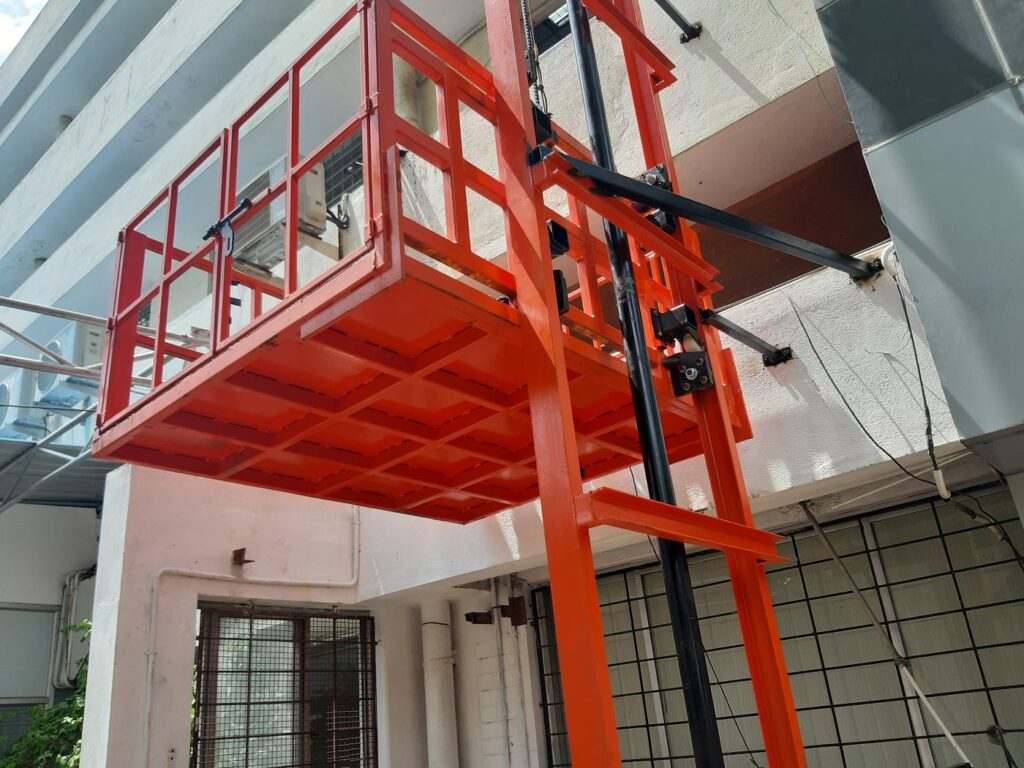Goods and Industrial Lifts
Goods and industrial lifts, also known as freight elevators or service lifts, are specialized lifting platforms designed to transport heavy goods and materials between different levels of buildings. They differ from passenger elevators in several ways:

- Heavier load capacity: Goods and industrial lifts can handle significantly heavier loads, typically ranging from several thousand pounds to hundreds of thousands of pounds, compared to the limited capacity of passenger elevators.
- Larger dimensions: To accommodate bulky and oversized items, goods and industrial lift cabins and doors are wider and taller than those in passenger elevators. This allows for easier loading and unloading of large equipment, pallets, and other materials.
- Sturdy construction: With heavier loads comes the need for stronger materials and more robust construction. Goods and industrial lifts typically have thicker steel walls, heavy-duty floors, and reinforced gates to withstand the demands of carrying heavy cargo.
- Functionality over aesthetics: Unlike passenger elevators designed for comfort and visual appeal, goods and industrial lifts prioritize practicality and durability. Interiors are typically bare-bones, focusing on efficient loading and unloading.
- Door types: While some goods and industrial lifts may have conventional doors similar to passenger elevators, others utilize vertical opening doors, bi-parting doors, or even roll-up doors to facilitate the entry and exit of large items.
- Lower speeds: As their primary function is transporting goods, speed is not a major priority for goods and industrial lifts. They typically travel slower than passenger elevators, prioritizing safety and stability over rapid movement.
- Limited passenger capacity: In some cases, goods and industrial lifts may allow for a few attendants to accompany the goods, but their primary purpose is not transporting people. Riding a goods and industrial lift without proper authorization and training is strictly prohibited for safety reasons.
Applications of goods and industrial lifts:
- Warehouses and distribution centers: Moving inventory, pallets, and equipment between different levels.
- Manufacturing facilities: Transporting components, machinery, and finished products within the production line.
- Retail stores: Stocking shelves, moving merchandise, and managing backroom inventory.
- Hospitals and medical centers: Transporting medical equipment, supplies, and even patients in specialized stretcher lifts.
- Parking garages: Lifting vehicles between parking levels.
- Libraries and museums: Moving heavy artwork, exhibits, and library materials.
- Data centers: Transporting and installing sensitive IT equipment.
Types of goods and industrial lifts:

- General freight elevators: The most common type, suitable for various goods and materials with capacities ranging from 2,000 to 10,000 pounds.
- Vehicle lifts: Designed specifically for lifting vehicles like cars and trucks in parking garages or auto shops.
- Dumbwaiters: Smaller lifts used for transporting food, dishes, and other light items, often seen in restaurants and hotels.
- Material lifts: Heavy-duty lifts specifically designed for construction sites and industrial applications, capable of handling extremely heavy loads.
- Passenger-goods lifts: These combine features of both passenger and goods lifts, allowing for occasional transport of people alongside cargo.
Important safety considerations:
- Always follow the weight limit and loading instructions for your specific goods and industrial lift.
- Never ride a goods and industrial lift unless authorized and trained in proper usage.
- Be aware of your surroundings and potential hazards when loading and unloading goods.
- Report any damage or malfunctions to the building management or maintenance personnel immediately.
By understanding the differences between goods and industrial lifts and passenger elevators, you can ensure the safe and efficient transportation of heavy materials in various settings.